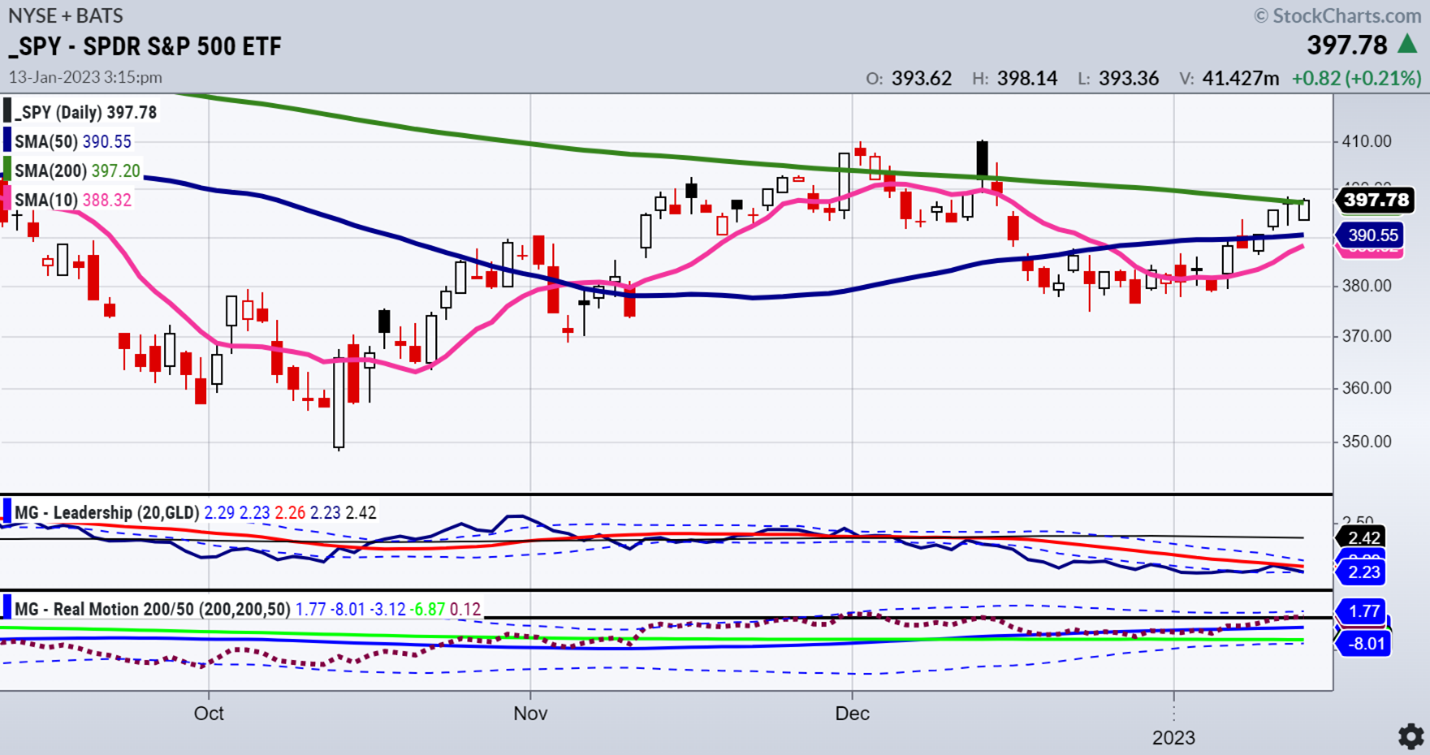Welcome to the new year and the new January reset. The January 6-month calendar range could be even more influential than usual.
Let me explain before showing you the S&P 500 (NYSE:SPY) price chart. After the first ten trading days in January, a range is established.
That range becomes a guideline for the next six months until it resets in July. Should an instrument clear the top of the range by the end of the ten days, the statistical chance of following through to the upside is more significant.
Conversely, should an instrument break the bottom of the range by the end of the ten days, the statistical chance of following through to the downside is more significant.
Should the instrument remain within the trading range, one would expect more chop until the range resolves.
We at MarketGauge, are particularly focused on this upcoming calendar range because of how seamlessly it corresponds with resistance in price and the moving averages.
Here is a chart of SPY on a daily timeframe.
And for fun, we use Gold (GLD (NYSE:GLD)) as our Benchmark, straight from our ACP Plug-in and Triple Play Leadership Indicator.
We have completed the first nine days of trading, which means by Thursday, Jan. 19, the January 6-month calendar range will be set.
The price and likely the top of the total ten days of the trading range corresponds beautifully with the 200-day moving average (green line).
And the price and very likely the bottom of the total ten days of the trading range corresponds beautifully with the 50 and 10-day moving averages (blue and cyan lines).
How clean is that?
A break above the price range will also take the SPY into an accumulation phase, clearing the 200-DMA, most likely yielding more upside.
Conversely, a break below the price range will also take the SPY into a bearish phase below the 50 and 10-DMAs, most likely yielding more downside.
Look how SPY is underperforming gold. Inflation peaked, you say? Gold versus the SPY says otherwise.
Also note that our other ACP Plug-In from Triple Play or Real Motion (momentum indicator) is stronger, above both the positively sloped and stacked 50 and 200 moving averages.
However, the RM indicator is also into resistance at the Bollinger Band, which could suggest an overbought SPY with a mean reversion on the horizon.
Regardless, we are ready and excitedly waiting to see which way the January calendar range resolves.
Of course, there are other factors to watch along with the calendar ranges. And every instrument will create a range.
So, keep a big eye on what happens once the 6-month range is established.
At that point, you will have another reliable indicator to follow, which should help you eliminate the noise of the talking heads.
ETF Summary
- SPY Closed above the 200-DMA and now has to stay above and clear 400.
- iShares Russell 2000 ETF (NYSE:IWM): Can this get through 190? A game-changer if does.
- Dow Jones Industrial Average ETF Trust (NYSE:DIA): Dec high 348.22 now looms.
- Invesco QQQ Trust (NASDAQ:QQQ): Confirmed the recuperation phase and is right at the 200-WMA resistance 281.
- S&P Regional Banking ETF (NYSE:KRE): Still the most concerning sector with 60 pivotal and under 57 lights out. Needs to clear 65 to stay in the game.
- VanEck Semiconductor ETF (NASDAQ:SMH): Another nail-biter stopping right at the 50-WMA or 226.
- iShares Transportation Average ETF (NYSE:IYT): Also stopped at the 50-WMA or 231.50.
- iShares Biotechnology ETF (NASDAQ:IBB): 138.74 December high the place to clear with 130 key support.
- S&P Retail ETF (NYSE:XRT): Amazing how the Jan 6-month range and these 50-WMAs line up in the Economic Modern Family. 66.70 to clear and hold if good

